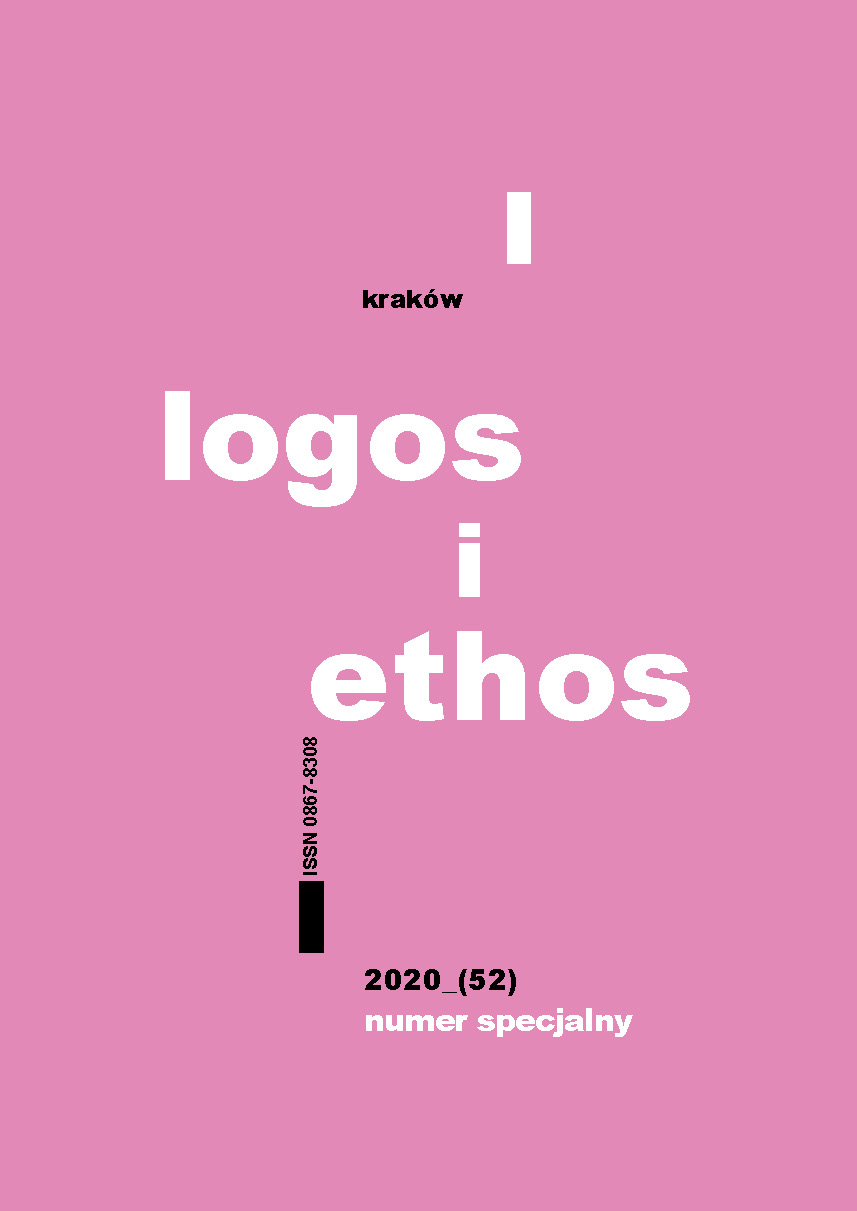Awatary i powłoki: (bez)cielesność w literaturze cyberpunkowej
DOI:
https://doi.org/10.15633/lie.3578Słowa kluczowe:
cyberpunk, postmodernizm, technologia, ciało, cyberprzestrzeńAbstrakt
Artykuł porusza problem cielesności i jej granic w wybranych powieściach literatury cyberpunkowej, ze szczególnym uwzględnieniem ewolucji reprezentacji ciała w przestrzeni wirtualnej, która stanowi główny znak rozpoznawczy omawianego gatunku. W ogólnym ujęciu wspomniana ewolucja postępuje od swoistej negacji ciała we wczesnej prozie cyberpunkowej, poprzez jego estetyzację w utworze Zamieć Neala Stephensona, po kwestię związku ciała z umysłem poruszoną w powieści Modyfikowany węgiel Richarda Morgana. Zagadnienie cielesności w omawianych tekstach stanowi zarówno problem, jak i wyzwanie ontologiczne, ulokowane zostaje bowiem w technologicznie determinowanych środowiskach, które zmuszają tekstualne podmioty, a tym samym czytelnika, do ciągłej rewizji granic i statusu własnej cielesności w świecie coraz bardziej przypominającym cyberpunkowe scenerie.
Bibliografia
Baudrillard J., Simulacra and Simulation, Ann Arbor 1994.
Bukatman S., Terminal Identity: The Virtual Subject in Postmodern Science Fiction, Durham 1993.
Cavallaro D., Cyberpunk and Cyberculture: Science Fiction and the Work of William Gibson, London–New Brunswick 2000.
Descartes R., Medytacje o filozofii pierwszej, tłum. J. Hartman, Kraków 2002.
Gibson W., Burning Chrome, w: Burning Chrome and Other Stories, London 1995, s. 195–220.
Gibson W., Idoru, tłum. Z. A. Królicki, Katowice 2011.
Gibson W., Mona Lisa Overdrive, New York–Toronto 1989.
Gibson W., Neuromancer, tłum. P. W. Cholewa, Poznań 1999.
Jameson F., Postmodernism or, The Cultural Logic of Late Capitalism, Durham 1991.
Kellner D., Mapping the present from the future. From Baudrillard to cyberpunk, w: D. Kellner, Media Culture: Cultural Studies, Identity and Politics Between the Modern and the Postmodern, London–New York 1995, s. 297–330.
Lacan J., Écrits: The First Complete Edition in English, trans. B. Fink, R. Grigg, H. Fink, New York–London 2006.
Mitchell W. J., City of Bits: Space, Place, and the Infobahn, Cambridge, MA 1996.
Morgan R. K., Modyfikowany węgiel, tłum. M. Pawelec, Warszawa 2017.
Myers R. E., The Intersection of Science Fiction and Philosophy: Critical Studies, Westport, CT 1983.
Schneider S., Science Fiction and Philosophy: From Time Travel to Superintelligence, Chichester 2016.
Stephenson N., Zamieć, tłum. J. Polak, Warszawa 2009.
Sterling B., Preface, w: W. Gibson, Burning Chrome and Other Stories, London 1995, s. 9–13.
Suvin D., Estrangement and Cognition, w: D. Suvin, Metamorphoses of Science Fiction: On the Poetics and History of a Literary Genre, New Haven–London 1979, s. 3–15.
Žižek S., Welcome to the Desert of the Real! Five Essays on September 11 and Related Dates, London–New York 2002.
Pobrania
Opublikowane
Numer
Dział
Licencja
Autorzy publikujący w czasopiśmie udzielają jego wydawcy zgody o następującej treści:
- Autor zachowuje autorskie prawa majątkowe do utworu, a jednocześnie udziela wydawcy czasopisma zgody na jego pierwszą publikację w wersji drukowanej i wersji online na licencji Creative Commons Uznanie autorstwa 4.0 Międzynarodowe oraz zgody na wykonywanie opracowań, w tym przekładów.
- Autor ma możliwość udzielania zgody niewyłącznej na opublikowanie utworu w wersji, która ukazała się w czasopiśmie (np. zamieszczenia go w repozytorium instytucjonalnym lub opublikowania w książce), wraz z informacją o jego pierwszej publikacji w czasopiśmie.
- Autor może umieścić swój utwór online (np. w repozytorium instytucjonalnym lub na swojej stronie internetowej) jeszcze przed zgłoszeniem utworu do czasopisma.

